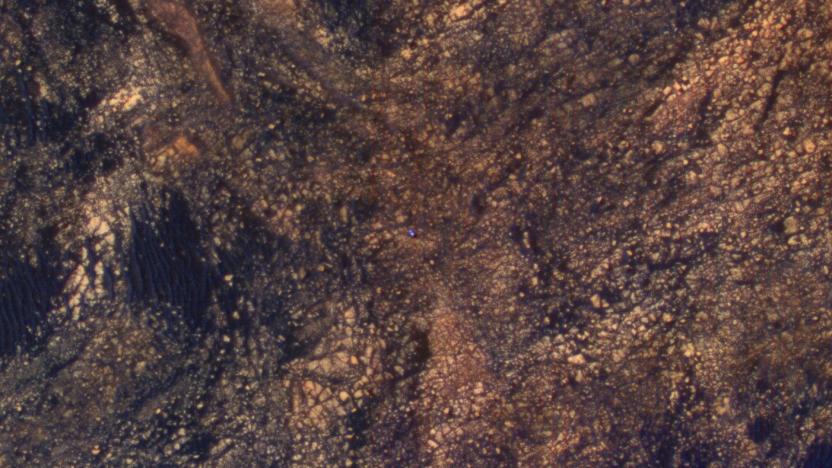spacephotography
Latest

NASA's Curiosity rover is just a speck in this orbiter photo
At this distance, Curiosity looks like a tiny beetle crawling over volcanic rock. Electric blue, its protective shell stands out against the rough, jagged mountainside. In reality, this is an image shot by NASA's Mars Reconnaissance Orbiter, an observational craft floating 200 miles above the planet's surface. We have, of course, seen Curiosity countless times before — it has a thing for selfies — but rarely from afar. In this photograph, you get a real sense of the planet's natural beauty and how empty, or quiet it must seem compared to Earth. Not that Curiosity minds, of course.

Visualized: NASA's Hasselblad photography manual
Sure, that TwitPic you posted was dope, but could it ever be as snazzy as a photo taken from space? Although doubtful, now at least there's the NASA Photography Training Program handbook to help you achieve such levels of awesomeness. The guide provides tips on operating the official camera of the space agency, the Hasselblad 500 EL/M, responsible for some of the most extraterrestrial shots this side of Pluto. Pointers on how to best operate the electric film lunar surface data camera include what type of lens to use and how to best use available light. Study up at the source -- after all, privatized space travel is just around the bend.

VLT Survey Telescope snaps out-of-this-world photos with 268-megapixel camera
The European Southern Observatory (ESO) has just released the first batch of shots taken by its VLT Survey Telescope (VST), and, given the results, we'd say the thing's got a bright future in photography. Not to be mistaken for its cousin, the VLT (very large telescope), the VST sports a 268-megapixel camera, known as the OmegaCAM, and a field of view "twice as broad as the full moon." The images released by the ESO feature the Omega Nebula (located in the Sagittarius constellation) and Omega Centauri in stellar detail. Annie Lebovitz, eat your heart out -- the rest of you hop on past the break for another shot by this up and coming shutterbug.


